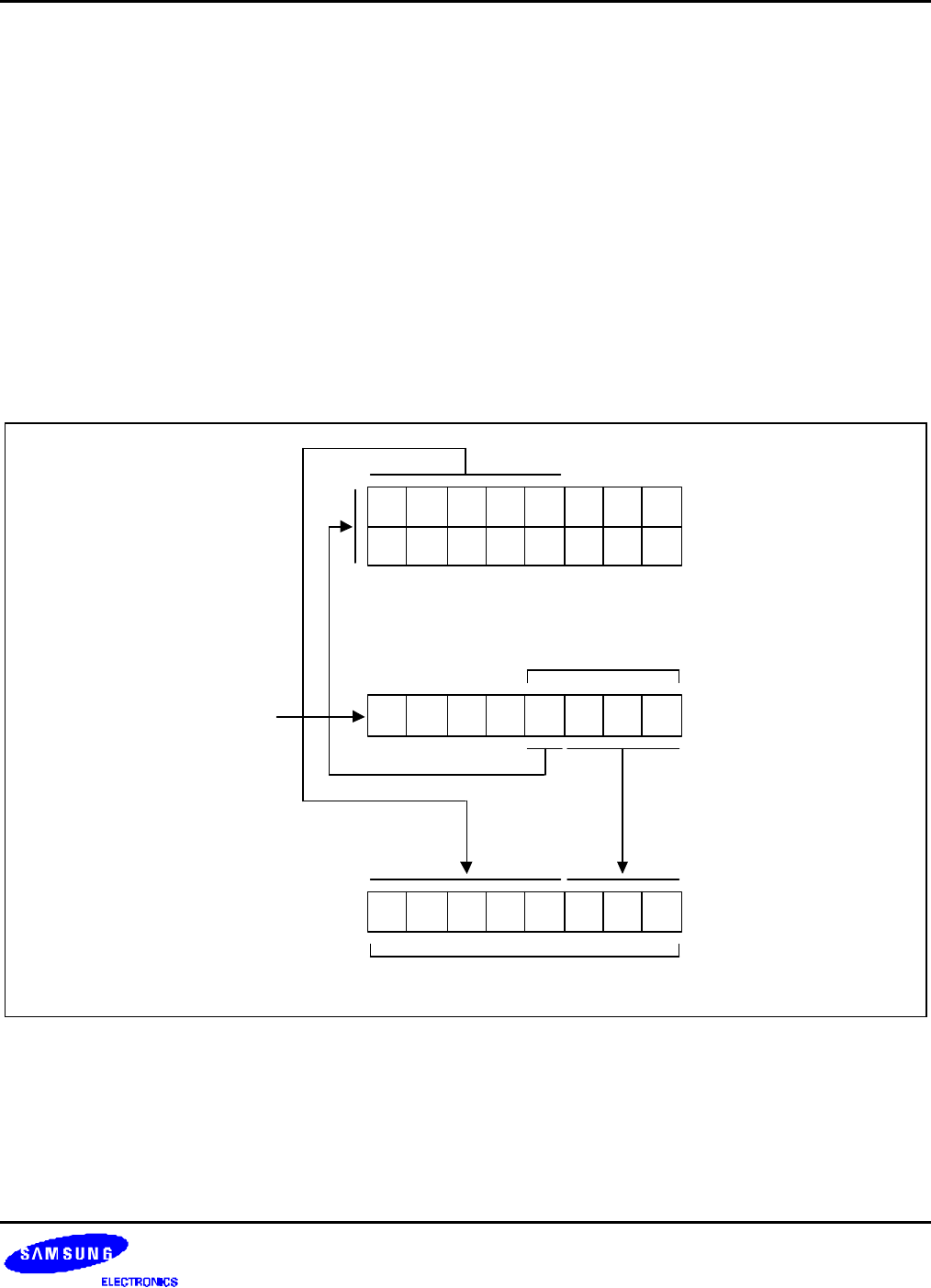
S3C84E5/C84E9/P84E9 ADDRESS SPACES
2-17
8-BIT WORKING REGISTER ADDRESSING
You can also use 8-bit working register addressing to access registers in a selected working register area. To
initiate 8-bit working register addressing, the upper four bits of the instruction address must contain the value
"1100B." This 4-bit value (1100B) indicates that the remaining four bits have the same effect as 4-bit working register
addressing.
As shown in Figure 2-13, the lower nibble of the 8-bit address is concatenated in much the same way as for 4-bit
addressing. Bit 3 selects either RP0 or RP1, which then supplies the five high-order bits of the final address. The
three low-order bits of the complete address are provided by the original instruction.
Figure 2-14 shows an example of 8-bit working register addressing. The four high-order bits of the instruction address
(1100B) specify 8-bit working register addressing. Bit 3 ("1") selects RP1 and the five high-order bits in RP1
(10101B) become the five high-order bits of the register address. The three low-order bits of the register address
(011) are provided by the three low-order bits of the 8-bit instruction address. The five-address bits from RP1 and the
three address bits from the instruction are concatenated to form the complete register address, 0ABH (10101011B).
8-bit logical
address
8-bit physical address
Register pointer
provides five
high-order bits
Address
Selects
RP0 or RP1
RP1
RP0
Three low-order bits
These address
bits indicate 8-bit
working register
addressing
1 1 0 0
Figure 2-13. 8-Bit Working Register Addressing


















